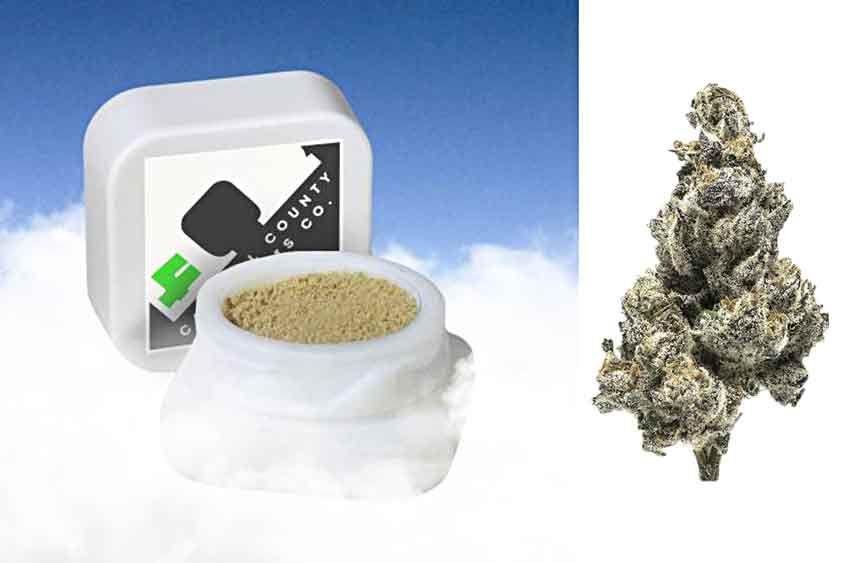Using medical marijuana for managing chronic pain management is one of the hotly debated topics in the US health industry. With chronic pain impacting a larger number of US citizens as compared to diabetes, heart ailments, and cancer combined, it’s crucial to find effective solutions sooner rather than later.
This blog aims to educate US citizens on how to use medical marijuana for chronic pain management, assuming that medical marijuana is legal in your state and you have met all necessary conditions to procure it legally from a cannabis dispensary.
Understanding Consumption Methods
The method of consumption plays a vital role in your overall marijuana experience. Different methods can alter the percentage of active compounds (cannabinoids) absorbed by your body, the time required to feel the effects, and the duration of these effects.
The four main marijuana consumption methods are:
- Inhalation: Vaping with a vaporizer or smoking
- Edibles: Gummies, cookies, brownies, and other edibles
- Tinctures & Oils: Dissolved under the tongue
- Topicals: Creams, ointments, salves applied directly to the skin
Let’s look into each method in more detail.
Inhaling
Inhaling marijuana is arguably the most effective method for reducing the central nervous system’s response to pain sensations. It allows the active compounds to cross the blood-brain barrier quickly.
Smoking Marijuana:
- Onset: You generally start to experience effects after 2 minutes.
- Peak: The sensation peaks after about 30 minutes.
- Duration: Effects last for about 2 to 4 hours.
Absorption: Around 25% of the active compounds are absorbed by the body.
Vaping Marijuana:
- Onset: Effects are felt similarly quickly as with smoking.
- Absorption: Approximately 33% of the active compounds are absorbed, making it slightly more efficient than smoking.
Consuming Edibles

Consuming marijuana edibles is one of the most common methods for medical use. Edibles ensure a prolonged duration before the effects are experienced, typically around 2 hours, contrasting with the immediate effects of inhaling.
Potency and Duration:
- Onset: Effects are felt after about 2 hours.
- Duration: Effects can be more potent and last longer compared to inhaling.
Types of Edibles:
- Gummies
- Cookies
- Brownies
- Granolas
- Lollies
- Butter
- Beverages
Tinctures and Oils
Tinctures and oils, often considered edibles, are consumed through the mouth but are absorbed more swiftly by the body than traditional edibles. They are usually placed under the tongue, where they dissolve and are promptly absorbed into the bloodstream.
Characteristics:
- Onset: Faster absorption compared to other edibles.
- Application: Typically held under the tongue for quicker entry into the bloodstream.
Applying Topicals
Topicals are used to reduce inflammation and localized pain. Unlike other methods, applying medical marijuana topicals does not lead to systemic absorption, meaning it doesn’t cause the high that may be experienced with inhaling or consuming marijuana.
Types of Topicals:
- Creams
- Lotions
- Oils
- Salves
Choosing the Right Strain for Chronic Pain Management
Selecting the appropriate strain of medical marijuana is crucial for effective chronic pain management. Different strains contain varying levels of cannabinoids (such as THC and CBD) and terpenes, which can influence their therapeutic effects. Here’s a guide to help you choose the right strain for your needs.
Understanding Cannabinoids
- THC (Tetrahydrocannabinol): Known for its psychoactive effects, THC can provide significant pain relief but may also cause euphoria or sedation.
- CBD (Cannabidiol): Non-psychoactive and known for its anti-inflammatory and analgesic properties, CBD is often preferred for its calming effects without the “high” associated with THC.
Indica vs. Sativa vs. Hybrid
- Indica: Typically associated with body relaxation and pain relief, Indica strains are often recommended for evening use due to their sedative effects.
- Sativa: Known for its uplifting and energizing effects, Sativa strains can help alleviate pain while maintaining daytime functionality.
- Hybrid: Combining traits from both Indica and Sativa, hybrids are tailored to provide a balanced effect, making them versatile for various pain management needs.
Recommended Strains for Chronic Pain

Have you heard of Medical marijuana, its benefits, and its drawbacks are hotly debated topics in the US. Today, more and more US states are legalizing the use of medical marijuana, and licensed cannabis dispensaries are commonplace. In this scenario, it is good to be aware of the pros and cons of this controversial plant.
Keeping that in mind, here is a highly informative blog on Cannabis Hyperemesis Syndrome. It is a health condition that may sometimes develop due to long-term cannabis use.
- ACDC: A high-CBD strain known for its strong pain-relief properties without psychoactive effects.
- Blue Dream: A balanced hybrid providing both pain relief and mental clarity, suitable for daytime use.
- Northern Lights: A potent Indica ideal for nighttime use, offering deep relaxation and significant pain relief.
- Harlequin: A Sativa-dominant strain with a high CBD content, providing pain relief without intense euphoria.
Consulting with a Professional
Before choosing a strain, it’s essential to consult with a healthcare professional or a knowledgeable staff member at a licensed dispensary. They can help you identify the most appropriate strain and consumption method based on your specific pain condition, lifestyle, and tolerance.
Choosing the right strain and consumption method can significantly enhance the effectiveness of medical marijuana for chronic pain management. Understanding the nuances of each strain, including its cannabinoid and terpene profile, can help you tailor your treatment to achieve optimal relief.
Understanding Dosage and Safety Considerations
Finding the right dosage is essential for the effective and safe use of medical marijuana in chronic pain management. This section will guide you through the key aspects of dosing and provide important safety tips.
Starting with Low Doses
When beginning medical marijuana treatment, it’s crucial to start with a low dose and gradually increase it until the desired effect is achieved. This approach helps minimize the risk of adverse effects and allows your body to adjust to the cannabinoids.
Initial Dosing Guidelines:
- Inhalation: Start with 1-2 inhalations, then wait at least 15 minutes before considering more.
- Edibles: Begin with a dose of 2.5-5 mg of THC, and wait at least 2 hours before consuming more.
- Tinctures & Oils: Start with 2.5-5 mg of THC or CBD under the tongue, then wait 30-60 minutes before adjusting.
- Topicals: Apply a small amount to the affected area and wait for effects before reapplying.
Understanding Tolerance and Sensitivity
Individual tolerance to THC and CBD can vary significantly. Factors such as age, weight, metabolism, and previous cannabis use influence how your body reacts to different doses. Some people may require higher doses for pain relief, while others may experience effective pain management with minimal amounts.
Tolerance Considerations:
- THC Sensitivity: Individuals sensitive to THC might experience anxiety or paranoia with higher doses. In such cases, a higher CBD to THC ratio is recommended.
- CBD Tolerance: Generally well-tolerated, but starting with lower doses is still advisable to gauge your body’s response.
Monitoring and Adjusting Dosage

Consistent monitoring of your response to medical marijuana is essential. Keep a journal to track the type of product, dosage, timing, and effects experienced. This record can help you and your healthcare provider make necessary adjustments to your treatment plan.
Key Tracking Elements:
- Symptom Relief: Note the level of pain relief achieved.
- Side Effects: Document any adverse effects, such as dizziness, dry mouth, or sedation.
- Duration of Effects: Record how long the relief lasts to determine the ideal dosing frequency.
Safety Considerations
While medical marijuana can be highly beneficial, it’s important to be aware of potential safety concerns and interactions with other medications.
Important Safety Tips:
- Avoid Driving: Do not drive or operate heavy machinery while under the influence of medical marijuana, especially if you are new to its effects.
- Interaction with Medications: Consult your healthcare provider about potential interactions with other medications you are taking.
- Storage: Store marijuana products securely, away from children and pets.
- Legality and Compliance: Ensure you comply with your state’s laws regarding medical marijuana use.
Recognizing and Managing Side Effects
Common side effects of medical marijuana can include dry mouth, dizziness, increased appetite, and fatigue. Severe side effects are rare but can occur, especially with high doses of THC.
Managing Common Side Effects:
- Dry Mouth: Stay hydrated and consider using sugar-free gum or lozenges.
- Dizziness: Sit or lie down until the feeling passes; avoid sudden movements.
- Increased Appetite: Plan healthy snacks to manage the “munchies” responsibly.
- Fatigue: Time your doses to coincide with periods when you can rest, such as in the evening.
Understanding dosage and safety considerations is crucial for the effective and responsible use of medical marijuana for chronic pain management. Starting with low doses, monitoring your response, and being aware of potential interactions and side effects will help you optimize your treatment and enhance your quality of life.
Integrating Medical Marijuana with Other Pain Management Strategies
Medical marijuana can be an effective tool for managing chronic pain, but it often works best when used in combination with other pain management strategies. This section explores how to integrate medical marijuana with various complementary therapies to optimize pain relief and improve quality of life.
Combining Medical Marijuana with Physical Therapy

Physical therapy (PT) is a cornerstone of chronic pain management, focusing on improving mobility, strength, and function. When used alongside medical marijuana, PT can help enhance pain relief and facilitate better movement.
Tips for Integration:
- Pre-Session Use: Use medical marijuana before PT sessions to reduce pain and improve tolerance to physical activities.
- Post-Session Recovery: Use topicals or other forms of medical marijuana to alleviate post-exercise soreness and inflammation.
- Communication with Therapists: Inform your physical therapist about your medical marijuana use so they can tailor exercises and monitor your response.
Integrating Medical Marijuana with Mind-Body Practices
Mind-body practices such as yoga, meditation, and mindfulness can help manage pain by reducing stress and promoting relaxation. Medical marijuana can enhance these practices by alleviating physical discomfort and facilitating mental calmness.
Tips for Integration:
- Yoga and Stretching: Use medical marijuana to ease muscle tension and enhance flexibility during yoga or stretching exercises.
- Meditation: A small dose of medical marijuana can help calm the mind, making it easier to focus during meditation sessions.
- Mindfulness: Practice mindfulness with the aid of medical marijuana to increase body awareness and manage pain perception.
Combining Medical Marijuana with Dietary Adjustments
Diet and nutrition play a significant role in managing chronic pain, particularly for conditions like arthritis and fibromyalgia. Anti-inflammatory diets can complement the effects of medical marijuana.
Tips for Integration:
- Anti-Inflammatory Foods: Incorporate foods rich in omega-3 fatty acids, antioxidants, and other anti-inflammatory compounds.
- Hydration: Ensure adequate hydration to support overall health and enhance the effectiveness of medical marijuana.
- Supplementation: Consider supplements such as turmeric, ginger, and CBD oil to further reduce inflammation and pain.
Using Medical Marijuana Alongside Traditional Medications
Many individuals with chronic pain are already using traditional pain medications. Medical marijuana can be used alongside these medications, but it’s essential to do so under medical supervision to avoid interactions and optimize dosages.
Tips for Integration:
- Consult with Healthcare Providers: Always discuss your medical marijuana use with your healthcare provider to ensure safe and effective integration with other medications.
- Adjusting Dosages: Your doctor may need to adjust the dosages of traditional medications to complement the effects of medical marijuana.
- Monitoring for Interactions: Regularly monitor for any potential interactions or side effects when combining treatments.
Enhancing Lifestyle Modifications with Medical Marijuana
Lifestyle modifications such as regular exercise, adequate sleep, and stress management are crucial for managing chronic pain. Medical marijuana can support these modifications by alleviating pain and promoting relaxation.
Tips for Integration:
- Exercise: Use medical marijuana to manage exercise-induced pain and improve adherence to regular physical activity.
- Sleep: Utilize strains high in CBD or Indica varieties to promote restful sleep and address insomnia related to chronic pain.
- Stress Management: Incorporate medical marijuana into your stress management routine to reduce anxiety and improve overall well-being.
Integrating medical marijuana with other pain management strategies can provide a comprehensive approach to chronic pain relief. By combining medical marijuana with physical therapy, mind-body practices, dietary adjustments, traditional medications, and lifestyle modifications, individuals can enhance their overall pain management plan and improve their quality of life. Always consult with healthcare professionals to ensure safe and effective integration tailored to your specific needs.
Conclusion
Inhalation, edibles, tinctures, and topicals—helps tailor treatment to individual needs, optimizing the absorption and duration of effects. Selecting the right strain, whether Indica, Sativa, or Hybrid, further enhances pain relief by leveraging specific cannabinoid and terpene profiles. Starting with low doses and gradually adjusting ensures safe and effective use, while being mindful of potential interactions with other medications and managing side effects like dry mouth or dizziness.
Integrating medical marijuana with other pain management strategies, such as physical therapy, mind-body practices, dietary adjustments, and traditional medications, provides a holistic approach to chronic pain relief. Combining medical marijuana with lifestyle modifications can enhance overall well-being and quality of life. Always consult healthcare professionals to tailor the treatment plan to your specific needs, ensuring a balanced and effective approach to chronic pain management. This multi-faceted strategy empowers individuals to achieve better control over their pain and leads to a more fulfilling life.
Consult a healthcare professional before using cannabis products; the advice provided is not a substitute for medical guidance.

